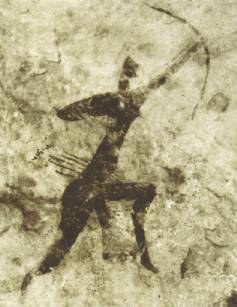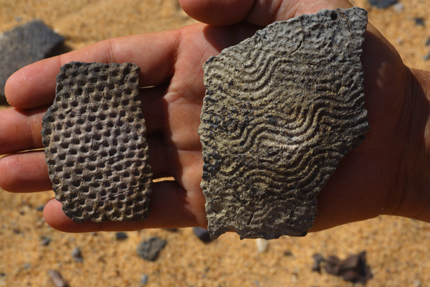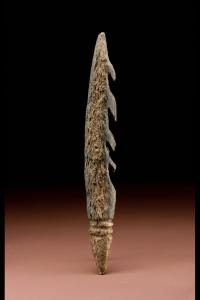Iva Kulichová et al. (2017).Internal diversification of
non-Sub-Saharan haplogroups in Sahelian populations and the spread of
pastoralism beyond the Sahara, http://onlinelibrary.wiley.com/doi/10.1002/ajpa.23285/full
This paper is based on speculation. It has no ancient DNA and archaeological data to support its conclusions. To support their propositions they cite Haber et al,2016, and Cherni et al, 2005. The Haber et al(2016) article claims that there was a back migration of R1b carriers because some Central Africans carry R1b, but these writers never name the culture bearers who introduced R1b, and the European culture this population came from. The Cherni et al (2005) paper is speculation because it lacks any aDNA to support their claims.
The authors state that:
This paper is based on speculation. It has no ancient DNA and archaeological data to support its conclusions. To support their propositions they cite Haber et al,2016, and Cherni et al, 2005. The Haber et al(2016) article claims that there was a back migration of R1b carriers because some Central Africans carry R1b, but these writers never name the culture bearers who introduced R1b, and the European culture this population came from. The Cherni et al (2005) paper is speculation because it lacks any aDNA to support their claims.
The authors state that:
quote:
RESULTS:
We show that age estimates of the maternal lineage H1cb1, occurring almost exclusively in the Fulani, point to the time when the first cattle herders settled the Sahel/Savannah belt. Similar age estimates were obtained for paternal lineage R1b-V88, which occurs today in the Fulani but also in other, mostly pastoral populations. Maternal clade U5b1b1b, reported earlier in the Berbers, shows a shallower age, suggesting another possibly independent input into the Sahelian pastoralist gene pool.
CONCLUSIONS:
Despite the fact that animal domestication originated in the Near East ∼ 10 ka, and that it was from there that animals such as sheep, goats as well as cattle were introduced into Northeast Africa soon thereafter, contemporary cattle keepers in the Sahel/Savannah belt show uniparental genetic affinities that suggest the possibility of an ancient contact with an additional ancestral population of western Mediterranean ancestry.
Problem 1. The Fulani did not come from the Middle East. Secondly, just because a population carries a specific gene does not mean the haplogroup originated elsewhere. The authors could only support this conclusion by:
a) Providing individuals from specific cultures that carry a specific set of genes;
b) Provide the name of the culture and artifacts associated with the culture;
c) The date for the Culture
The failure to provide this information makes the claim groundless.
Problem 2. The authors contend that cattle domestication began in the Middle East. But they fail to identify the cattle rearing culture associated with this domestication.
The earliest documented case of cattle domestication comes from Nabta Playa. The population at Nabta Playa , took cattle and Ounan-Harifian points to the Levant. It was these African agro-pastoral people who took cattle rearing and archery to Europe and spread the Bell Beaker and related cultures across Europe.
The archeaogenetic evidence makes it clear that H1 was taken to Iberia, not vice versa.
Genetic evidence based on contemporary populations can not support an ancient origin of any population without archaeological and linguistic evidence.
Reference:
Clyde Winters, The Fulani are not from the Middle East, PNAS 2010 107 (34) E132; published ahead of print August 3, 2010, doi:10.1073/pnas.1008007107




